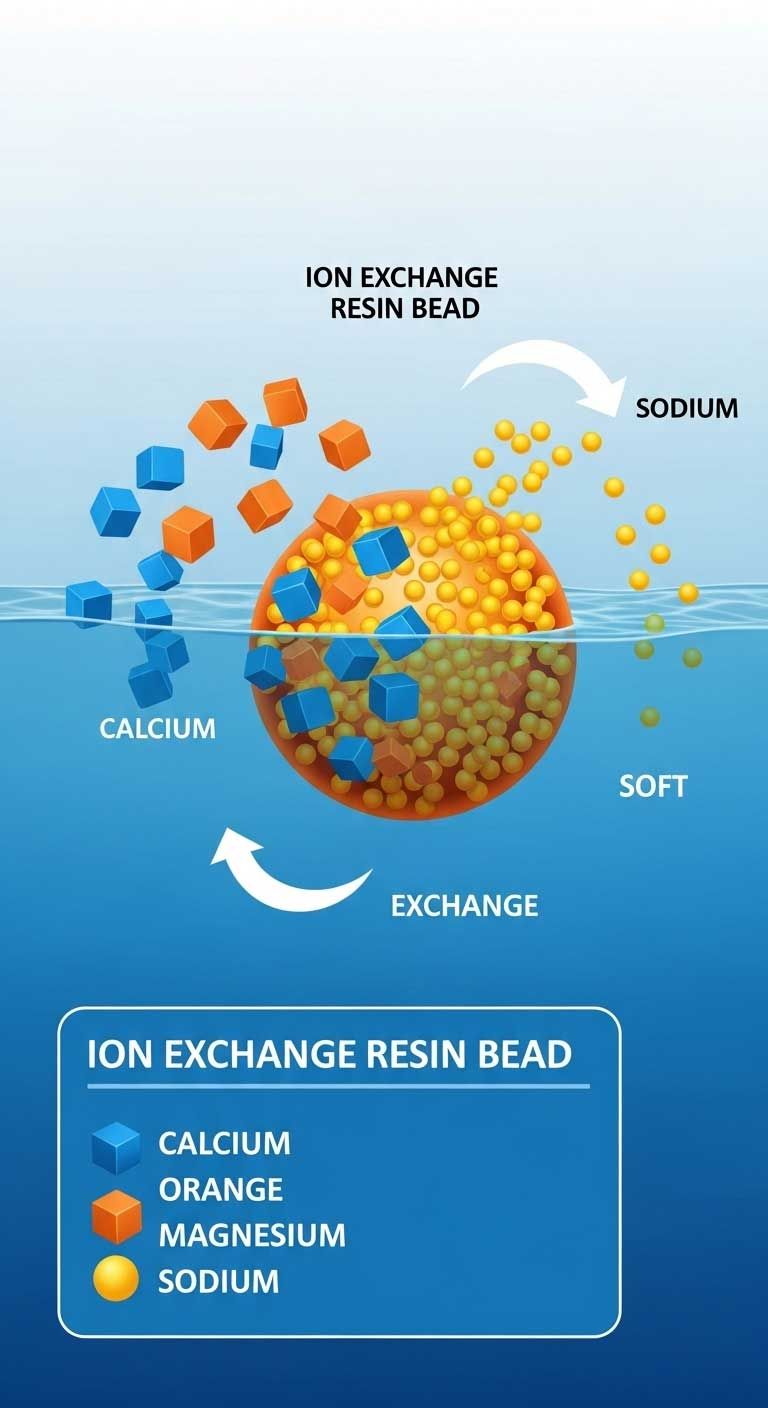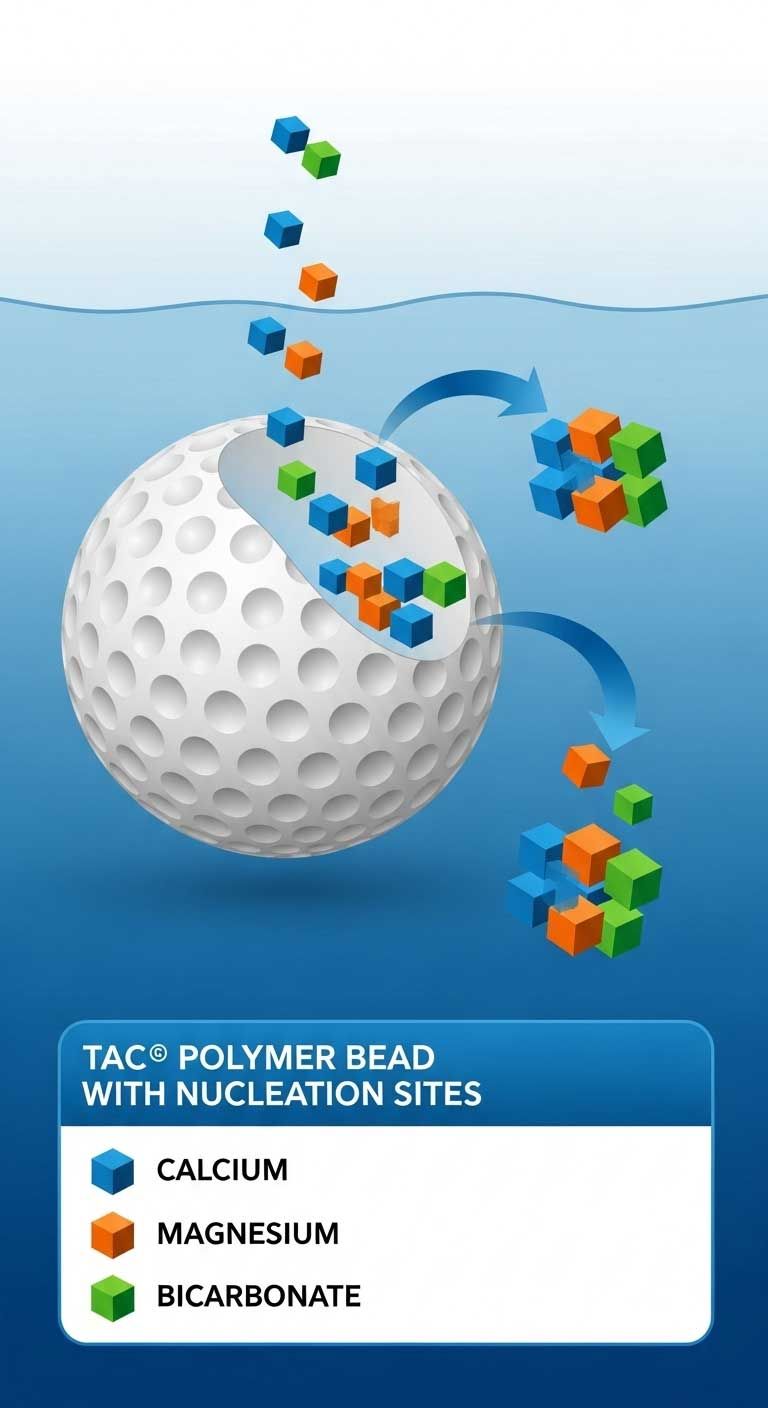Do Salt-Free Water Softeners Actually Work? An Expert’s Honest Investigation
After I discovered my shocking 17 GPG water hardness number, I thought the hardest part was over. I was wrong. I had stepped into a marketing maze where the debate over salt-based vs. salt-free systems was confusing and fraught with hype. I was almost seduced by a magical promise. So I asked the most important question of my entire research: do salt-free water softeners work? This article is the definitive answer, born from weeks of separating scientific fact from sales fiction.
The Short Answer: Yes, But Not for What You Think
So, let’s get straight to it: do salt-free water softeners work? Yes, but only for one highly specific task: reducing limescale buildup inside pipes and on heating elements. However—and this is the million-dollar distinction—they do NOT soften the water. They do not remove the minerals that cause all the other problems you’re likely trying to solve. If you’re here because of dry skin, brittle hair, soap-scum-covered shower doors, or stiff, faded laundry, a salt-free conditioner is not the solution you’re looking for.
Expert Takeaway: The term “salt-free water softener” is a marketing misnomer. The correct term is “salt-free water conditioner.” It conditions water to prevent scale, but it does not produce soft water or any of its benefits for skin, hair, and laundry. Anyone who tells you otherwise is either misinformed or misleading you.
Understanding this difference is everything. It’s the key to avoiding a costly mistake. Let’s look at the evidence, starting with the science behind each technology.
The Gold Standard: How Ion Exchange Actually Softens Water
A traditional, salt-based water softener is the only technology that physically removes hardness minerals. It operates on a proven, decades-old scientific principle called ion exchange. It is not new, and it is not magic; it’s robust chemistry.
Inside the main mineral tank are millions of tiny, porous resin beads. These beads are “charged” with soft sodium ions. As your hard water flows through the tank, the resin acts like a powerful magnet for hardness minerals. The positively charged calcium and magnesium ions have a stronger attraction to the resin than the sodium ions. They kick the sodium ions off the beads and take their place, effectively being trapped by the resin. The sodium ions, in turn, are released into the water. It’s a one-for-one swap that physically strips the water of the minerals that cause hardness. This is why it’s the only real solution to the negative hard water effects on your life.
The “Regeneration Cycle”: The Secret to Longevity
Eventually, the resin beads become saturated with hardness minerals and can’t grab any more. This is where the salt comes in. The system’s control valve, its “brain,” automatically initiates a “regeneration” cycle (usually in the middle of the night). During this cycle, it uses a saltwater solution (brine) from the second tank to flush the resin beads. The highly concentrated sodium in the brine is strong enough to overwhelm the calcium and magnesium, kicking them off the resin and sending them down the drain. The beads are then “recharged” with a fresh supply of sodium ions and are ready to soften water again. This clever, self-cleaning process is what allows a water softener to be effective for 15-20 years or more.
The “Salt-Free” Method: How TAC Technology Conditions Water
So if they don’t remove minerals, how do salt-free water softeners work at all? They work for scale reduction, using a process called Template Assisted Crystallization (TAC), sometimes also called Nucleation Assisted Crystallization (NAC). This is a physical process, not a chemical one.
The TAC media inside the tank is a specialized polymer or ceramic material covered in microscopic nucleation sites. As water flows through, these sites act as templates, grabbing hardness ions and forcing them to combine into tiny, stable “seed crystals.” These heat-resistant, insoluble micro-crystals are harmless and remain suspended in the water, flowing right through your plumbing without sticking to surfaces. It’s a clever way to prevent scale, but it’s crucial to remember the minerals are still fully present in your water. Their chemical nature is unchanged.
Limitations of the Technology
While effective for scale, TAC has limitations. Its performance can be hindered by high levels of iron, manganese, or sediment in the water. Furthermore, its effectiveness can decrease in very hard water (generally considered above 15-20 GPG). It’s a precision tool, whereas ion exchange is more of a reliable workhorse across a wider range of water problems.
The Evidence: A Head-to-Head Comparison to See If Salt-Free Softeners Work
To fully answer “do salt-free water softeners work?”, you must compare their real-world results to a true softener. Here is the evidence.
| Benefit / Feature | True Water Softener (Removes Minerals) | Salt-Free Conditioner (Alters Minerals) |
|---|---|---|
| Stops Pipe & Appliance Limescale | Yes, 100%. | Yes, very effectively. |
| Helps Dry Skin, Eczema & Irritation | Yes. | No. |
| Makes Hair Softer and Manageable | Yes. | No. |
| Improves Soap & Shampoo Lathering | Yes. | No. |
| Makes Laundry Softer & Brighter | Yes. | No. |
| Reduces Soap Scum on Shower Doors | Yes. | No. |
A Deeper Dive Into the Results
As the evidence shows, the answer to “do salt-free water softeners work?” depends entirely on your definition of “work”. Let’s break down what this means for you.
Winner for Skin & Hair: The Water Softener
This isn’t even a contest. The reason your skin feels dry and your hair feels brittle is because of the physical presence of calcium and magnesium reacting with soap to form soap scum. A conditioner leaves these minerals in the water, so the reaction still happens. A softener removes them entirely. The “slick” or “slippery” feeling of soft water is the feeling of your skin’s natural oils, no longer being stripped away by soap scum. It is the feeling of true clean.
Winner for Appliance Protection: It’s a Tie
Both systems are highly effective at preventing future limescale buildup on the inside of your pipes and on the heating elements. In fact, an independent study by Arizona State University confirmed that TAC technology is over 90% effective at preventing scale. A softener is 100% effective. For this one specific job, both technologies work very well. The key difference is that a softener can also help to slowly remove existing scale, whereas a conditioner cannot.
Winner for Saving Money on Soaps: The Water Softener
With soft water, you’ll immediately notice you need far less soap, shampoo, and detergent to get a rich lather. This is because the soap isn’t being “wasted” by reacting with hardness minerals. A conditioner has no effect on this; you’ll use the same amount of cleaning products as you did before. Over years, the savings from a softener can be significant, often offsetting the cost of salt.
Winner for Low Maintenance: The Conditioner (with a catch)
A conditioner wins on day-to-day convenience because you don’t have to add salt. However, it’s not “zero maintenance.” The internal TAC media must be replaced every 3-6 years, a procedure that can be expensive. A softener requires you to add a bag of salt every month or two, a simple 5-minute task. You must decide which maintenance schedule you prefer.
Debunking the “Salt-Free” Hype: Why Is It So Persuasive?
If the science is so clear, why is the **water softener vs. salt-free conditioner** topic so confusing? Because the marketing for salt-free systems is brilliant. It preys on common concerns:
- “No Salt, No Hassle”: This promise is tempting. No heavy bags of salt to buy and carry. This is true, but it ignores the fact that you are not getting the primary benefits of soft water.
- “Eco-Friendly”: The argument is that softeners waste water and discharge salt brine. While there is a discharge, modern high-efficiency softeners use surprisingly little water and salt. The environmental impact of manufacturing the complex media for conditioners, which needs replacement every few years, is often overlooked.
- “Zero Maintenance”: This is not entirely true. The TAC media inside a conditioner degrades over time and typically needs to be replaced every 3 to 6 years, which can be a significant and costly procedure.
The appeal is undeniable, but it’s crucial to understand that you are trading every single benefit of soft water for the sole convenience of not using salt.
Your Questions Answered: Digging Deeper
This is a clever marketing strategy. Because the primary public complaint about water softeners is the need for salt, companies created a “salt-free” category to attract customers. The term is misleading, but effective. This is a key point of confusion for people asking do salt-free water softeners work.
The Final Verdict: So, Do Salt-Free Water Softeners Work?
They work to prevent scale. They DO NOT work to soften your water. After all the research, the answer to our question, “do salt-free water softeners work?” is a clear and resounding “no” for solving the problems of dry skin, dull hair, and stiff laundry. If you are suffering from these tangible problems, the only proven solution is a system that actually removes the problem minerals.
You now have the clarity to make the right choice. The next step is to understand the investment required for a true solution.


